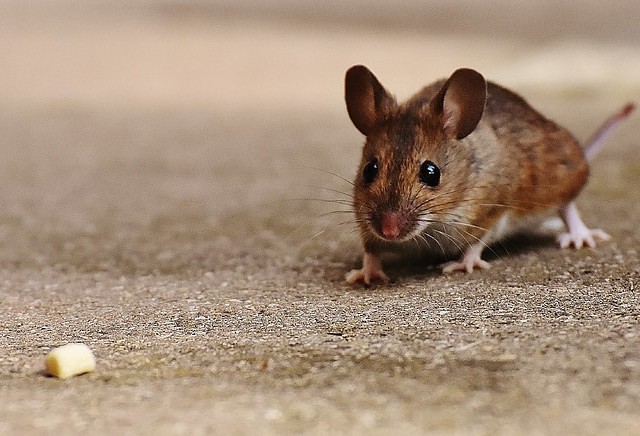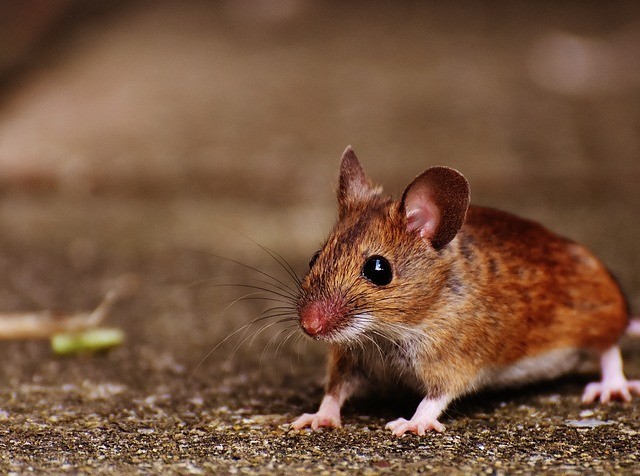Got a Mouse in the House? Here’s How to Keep Them Out
House mice may look harmless, but once they’re indoors, they can quickly become a nuisance. From chewing through wires to leaving droppings in the kitchen cupboards, you’ll tire of these uninvited pests pretty quickly. The good news is that most mice infestations can be prevented if you know how mice get into a house in the first place — and how to block those weak spots before they make themselves at home.
Why Mice Come Indoors in the First Place
Mice don’t wander into your home by chance (or even curiosity) – they’re opportunistic. They’re usually looking for the basics: food, warmth, and a safe place to raise their families. Your house probably ticks all these boxes.
Seasonal behaviour
Autumn sees the biggest influx of mice as temperatures drop, or when heavy rain sets in, and outdoor food sources become scarce. Mice begin seeking winter shelter from October onwards, which is when they’re most likely to target your home. This is a crucial time for preventative tactics. Also, be on guard in spring, when a secondary wave of pregnant females might look for nesting sites.
The lure of warmth, food, and shelter
Mice have an amazing sense of smell, and the tiniest whiff of food is enough to tempt them. Crumbs on the floor, pet food bowls, or an accessible bird feeder outside can all attract them closer. Once inside, warm loft insulation, wall cavities, basements, cupboards, and cluttered storage areas are ideal nesting spots – everything a mouse family could want. Central heating provides consistent warmth, while kitchens and pantries offer reliable food sources.

Common Entry Points for House Mice
Mice are very, very sneaky. Here’s the fact that surprises most people: an adult mouse can squeeze through a hole no bigger than a pencil. So, when it comes to finding ways inside, they’re much more capable than you might expect.
The mouse motorway
Any small gap or crack in brickwork, mortar, or timber can be enough for mice to slip through. Damaged weather seals on doors, cracked air bricks, or loose roof tiles are all open invitations. What looks like a minor gap to us is a wide-open door to them. Mice have collapsible rib cages and can compress their bodies dramatically. Young mice are even more flexible and can navigate gaps as small as 4mm. This means that spaces around pipe work or small cracks in foundations can all serve as entry points.
Where mice make their entry
The most common entry points are often the ones we never think to check. The gaps around water pipes, gas lines, or electrical cables are rarely sealed perfectly. They’ll follow these pathways straight into kitchens, bathrooms, and lofts. Garages and basements, often with gaps under doors, also provide easy access. Ventilation systems offer another route in. Air bricks, extractor fan vents, and loft ventilation gaps can all provide access if they’re not properly screened. Mice are excellent climbers, and once they’re inside, it’s only a matter of time before they spread further into the home.
How to Spot Signs of Mouse Entry
Prevention is best, but early detection is a close second. Mice are generally secretive, but they do leave calling cards…
Visible clues to watch for
Droppings are usually the first thing most people notice. Fresh mouse droppings are small and dark. You’ll find them along walls, under sinks, in cupboards, or near food sources. Each mouse produces 50-80 droppings daily, so even a small problem becomes obvious quickly.
You might also notice gnaw marks on food packaging, plastic, wood, cardboard, or even electrical wires. Look for small, clean-edged bite marks, often accompanied by tiny wood or plastic shavings. Another telltale sign is greasy smudge marks – mice follow the same routes repeatedly, and their oily fur brushes along walls and skirting boards.
Subtle signs you might miss
Mice are most active at night and just before dawn. You might hear light scratching or scampering sounds in walls or ceilings. These sounds are usually intermittent (rather than constant). Finding shredded paper, fabric, or insulation material can suggest a nest. You might also pick up on a persistent, musky ammonia-like smell from their urine. Even pets can be a giveaway – if your cat or dog starts pawing at a certain spot, or fixates on one particular area, they might be hearing or smelling activity you can’t.

Practical Ways to Keep Mice Out
The best long-term solution to mice is a prevention-first approach. That means making your home as unwelcoming as possible and blocking every potential route inside.
Sealing gaps and blocking access
Simple physical barriers make it much harder for mice to slip in unnoticed:
- Fill cracks in walls or around pipework with wire wool and sealant
- Fit galvanised mesh covers over vents and air bricks
- Install weatherproof strips on the base of doors and garage entrances.
Good habits and deterrents
Even perfectly sealed homes can still attract mice if food sources are easily accessible. Here are some good habits that will keep mice at bay:
- Keep food sealed in airtight containers (including pet food)
- Don’t leave pet food bowls out overnight
- Keep kitchen surfaces clean and deal with spills promptly
- Ensure bins have tight-fitting lids
- Compost heaps should be kept away from the house
- Regularly declutter to reduce potential nesting sites
- Keep vegetation and plants trimmed back from walls.
Keep Mice Out of Your House With Pest Stop Boys
Even with good prevention, determined mice can still find ways in – and once they’ve settled in, they multiply quickly. If you’re already hearing scratching in the walls or want expert advice on keeping mice out for good, get in touch with Pest Stop Boys. We’re available 24/7 across East and West Sussex, with no call-out charges. Ready to reclaim your home from furry freeloaders?


